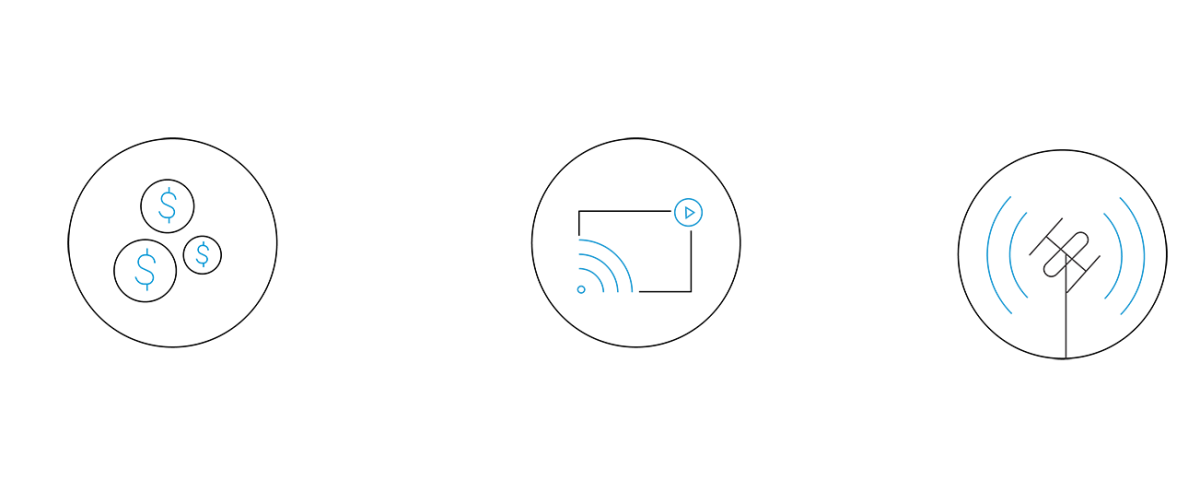
Microsoft’s new Industry Experience Center brings digital transformation to life
November 1, 2019
How Artificial Intelligence Is Changing Our Lives
November 1, 2019How to Identify Cord-Cutting Before It Happens

There are 119.9 million TV households in the US. Within those households, there are 186.7 million adults who watch cable or satellite TV and 33 million cord cutters. Cord cutting has been trending upwards since the early 2000’s. The rapid growth of streaming services in the late 2000’s became a catalyst to cord cutting, creating the streaming service market we have today.
What does this mean for service providers? In 2018, traditional Pay-TV providers lost 1.8 million subscribers. Research from the Diffusion Group suggests that cable and satellite TV penetration will drop 26% by 2030. The shift from cable or satellite to Internet only packages challenge service providers to proactively develop business models that provide services to cord cutters, cord nevers and cord loyalists alike.

Factors that Influence Cord Cutting
Statista conducted a survey in Q4 2017 to learn the factors that influenced consumer’s decision to end their cable or satellite services. The study revealed the following as three key factors:
- Price – 86.7% of those surveyed ended their cable service because they found the price to be too expensive.
- Internet streaming services – 39.7% said they use an Internet streaming service such as Netflix, Hulu or Amazon Video for content.
- Basic channels via antenna – 23% opted to get basic TV channels from an antenna.
Those surveyed said that the price of their cable service was too expensive. It’s worth noting that as of 2019, the cost of stacking streaming services is nearly the same as a cable subscription. Ampere Analysis found that 71% of US households stack their streaming services, with 23% having four or more SVOD services. In the last year, streaming service prices have seen significant hikes across the board. To make matters more complicated, new streaming services like Disney+ and HBO Max, are spreading content out across a variety of services, making “a la carte” content a pricey endeavor for consumers. Based on 2019 prices, an infographic from Consumer Reports shows that stacking Disney+, Hulu, HBO Now, Amazon Prime Video, Netflix 4K and YouTube TV costs a whopping $103 per month, slightly above the national average cost of cable.

Invisible Signs of Cord Cutting
The complex TV environment impacts more than just the customer. TV provider companies are now tasked with creating value for their services, bolstering their TV offerings while also improving their Internet only packages to maintain TV service loyalists and appeal to cord cutters. Service providers can gain valuable insight on their customers viewing habits based on broadband data patterns. OpenVault’s Q2 2019 Broadband Industry report shows that broadband only subscribers use an average of 390.42 GB of data and Pay-TV bundled subscribers used an average of 210.89 GB of data in Q2 2019.

Unique Insights and Benefits
Managed Wi-Fi services can give service providers unique insight into customer broadband data usage, revealing patterns that suggest whether or not a customer is shifting towards cutting the cord. That’s where Actiontec’s OptimTM Managed WiFi service comes in. OptimTM is a managed Wi-Fi service that uses machine learning, artificial intelligence and big data analytics to reveal broadband patterns. Through changing broadband patterns, service providers can identify customers that are “at risk” of dropping a service and proactively tailor a service for them that satisfies their needs and promotes customer loyalty. Consumers are ultimately looking for ways to save money, and often, cord cutting seems to be the solution, especially when customers are coming off of a limited time promotional period. Broadband data patterns can help service providers identify the customers who are in this transitional zone following a promotional period and shift them to alternative services, preventing revenue loss. Managing data flow not only improves user experience, but can offer revenue opportunities. Optim can also help to identify “power users,” subscribers who use large amounts of data per month, and shift those users to a usage-based billing (UBB) option. OpenVault found that users on UBB were 23% less likely to use more than 1TB of data and 61% less likely to exceed 2 TB of data when compared to the subscribers on flat rate billing plans.
In addition, OptimTM Managed WiFi service provides an array of benefits when offered to broadband customers as well. Advanced troubleshooting, self-healing automation, and improved network performance can keep customers in the know on the health of their home network while greatly reducing the number of truck rolls caused by Wi-Fi issues.

Leveraging Insights into Service Offerings
Beyond usage-based billing, some service providers are adapting to the changing TV content landscape by bringing the streaming services to their customers. AT&T partnered with DirecTV to launch AT&T Now to their customers. Verizon paired its Fios Internet service with a YouTube TV promotion. Comcast took an even bigger leap last month, announcing its plan to give free Xfinity Flex streaming boxes to their broadband-only subscribers, setting a new precedent for service providers. By developing partnerships with streaming services and offering their own platforms for streaming, service providers can encourage existing customers to transition to new subscriptions rather than dropping their subscription altogether. Service providers have partnered with streaming platforms in the past, but by offering streaming devices to complement their broadband services, service providers are setting themselves up to ride the cord cutting wave.
To stay up to date on cord cutting trends and other industry news, follow Actiontec’s Industry Articles and Research blog.
The post How to Identify Cord-Cutting Before It Happens appeared first on Actiontec.com.

